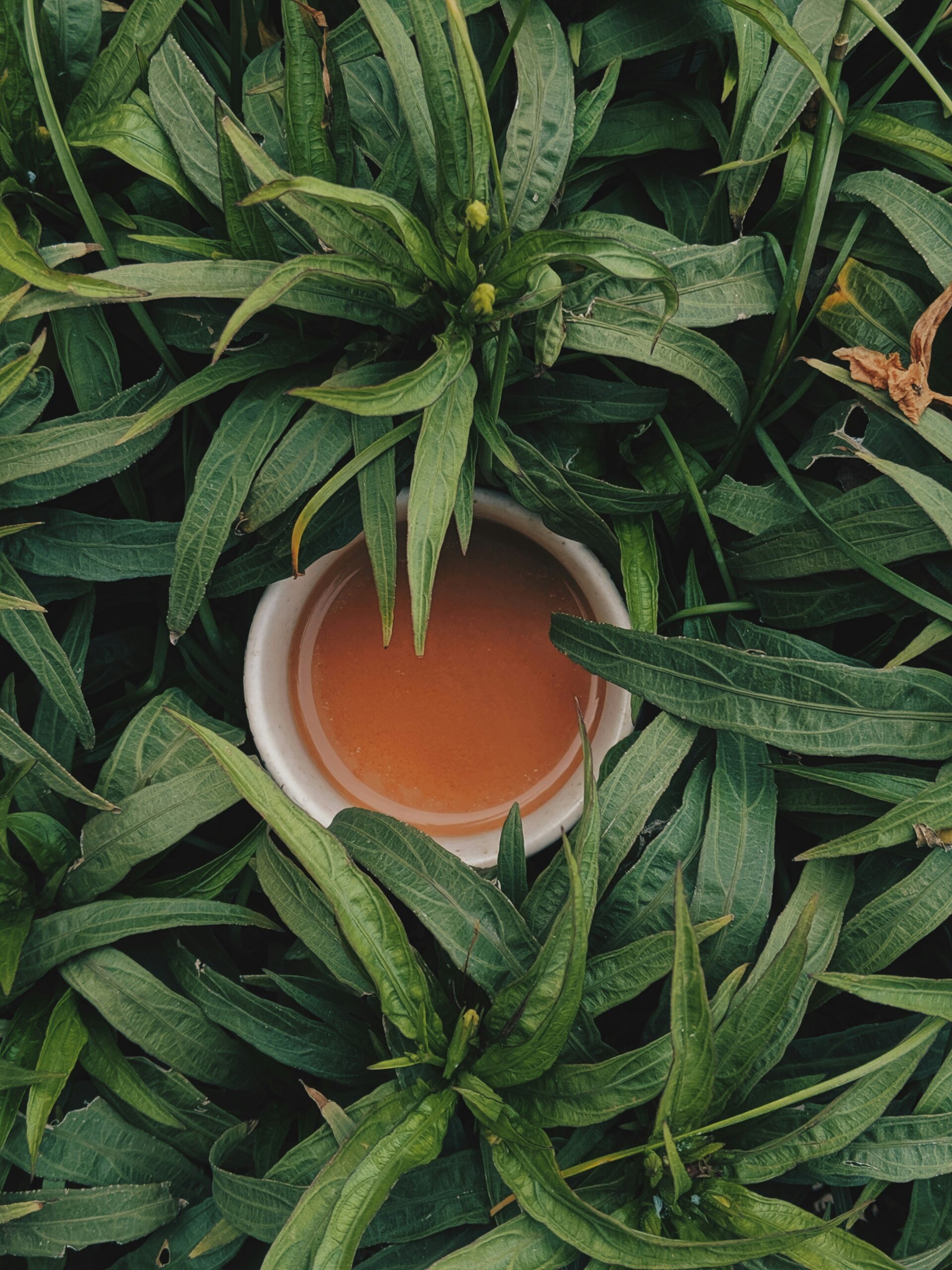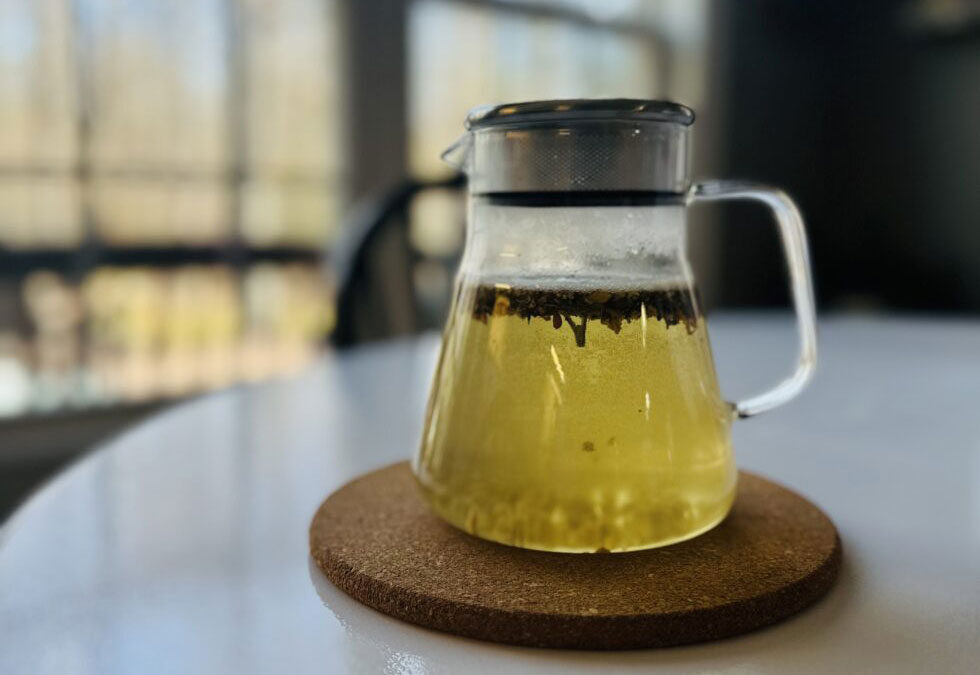It’s winter. It’s cold. It’s currently snowing in my town, so I need something warm to drink. Twenty-four-seven, mug in the hand. This is what winter does to me. Historically, I have reached for a second or third cup of coffee, only to dump it out because it didn’t have the same appeal as that first wake-me-up cup, and I really don’t want a secondary cortisol (and therefore blood sugar) spike. For this reason, I have been turning to herbal tea. I’ve never been a huge tea drinker, but in this instance, it does the trick.
Except then I read the article that’s been circulating recently about nano-plastics accumulating in our brains and I panicked! The tea bags! This is how a mind that leans toward holistic healing works, you see. Luckily, I have been able to find balance, and not actually panic (for the most part) when I hear these things because over the years, I have learned that the stress of the panic is sometimes more detrimental to my health than the thing itself. But I still make a concerted effort to reduce health risk when it is necessary and reasonable. And polymer tea bags do, in fact, leech microplastics.
This meant learning to make loose leaf tea. Which, naturally, meant doing a whole deep dive on tea itself and the many health benefits it supposedly has. Lucky for me, this happened to coincide with working with a client who thoroughly enjoys tea. Nothing I love more than making health recommendations that only serves to enhance the habits someone already has. So, here’s what I found, and why I will henceforth be an avid tea drinker.
Aside from water, tea is the most popular beverage in the world and the history of tea drinking is rich and spans across many cultures and thousands of years. Tea drinking originated in China, home to the native Camellia sinensis plant (also native to India). And what many don’t know is you just can’t steep any dehydrated plant in hot water and call it tea – true tea only originates from this particular plant. There are several types of teas, which differ in their oxidation (exposure to oxygen once harvested), created from the Camellia sinensis plant – white tea (least oxidized), green tea, oolong tea, and black tea (most oxidized).
The less oxidized, the less caffeine and generally the more nutrients and health benefits offered by the tea – but each tea type has proven benefits ranging from reducing cancer risk to improving lipid metabolism and facilitating weight loss (and more!). All teas contain bioactive compounds that interact with the human gut microbiome and absorb to have systemic effects. Catechins are the most active constituents in teas – EGCG being the most potent and the one contributing to tea’s anti-cancer effects. Other compounds in teas include: theaflavins, flavanols, vitamins, and minerals. Additional considerations to the potency and efficacy of tea are in its preparation, including water temperature and steep time. Find a great guide for how to prepare each type of tea here.

I really couldn’t delve into tea, without also researching herbal tea, which isn’t tea, but we call it tea because you make it like tea. Herbal infusion might be better name for it, but I digress. Dehydrated herbs steeped in hot water, while not tea per se, have their own health benefits and can offer a caffeine-free, extremely flavorful boost to actual tea or can be enjoyed on their own. There are many popular herbs and flowers used in this way, but some popular types, and ones I address further down, are: hibiscus, safflower, ginger, turmeric, ashwagandha root, rhodiola, and peppermint.
My ultimate goal in embarking on this research expedition was to uncover the health benefits of various teas to 1) convince myself to drink it, and 2) make a tidy handout for clients. So, below I have outlined the various teas and herbal infusions discussed above + their benefits to improving and/or restoring health. This is by no means a comprehensive guide. The data on herbs and teas is robust, and quite frankly more than I want to sift through when the risks of tea drinking are minimal in comparison (largest risk of tea drinking is potential iron deficiency, as the tannins in tea [and coffee] inhibit absorption of iron in the small intestine). I did, however, try to only include data from human trials and observational studies (versus rats and petri dishes). So, without further ado, here is what tea & herbs can do for you:
|
Tea/Herb |
Qualities |
Health Benefits (with regular/consistent consumption) |
|
Green Tea |
Minimal oxidation Low caffeine 25-35mg/8oz More astringent taste Highest in antioxidants |
Improvement in Benign Prostatic Hypertrophy Adjunctive therapy w/ synergistic effects in treatment of various cancers Reduced risk of prostate, esophageal, and pancreatic cancer Reduced risk of lung cancer in smokers Reduced risk of initial and recurrence of breast cancer Reduced risk of cardiovascular disease Reduced absorption of triglycerides and cholesterol and increased excretion of fat Improved glucose metabolism and insulin signaling Anti-inflammatory effects by increasing glutathione and superoxide dismutase levels. |
|
Oolong Tea |
Semi-oxidized Moderate caffeine 30-50mg/8oz May be infused multiple times (3-7) Flavor depends on roasting after oxidation (floral to rich) |
Mediates weight loss Mediates bile acid & lipid metabolism Reduced risk of breast cancer Reduced risk of/improvement in depressive symptoms |
|
Black Tea |
Fully oxidized Highest in caffeine 40-60mg/8oz Often flavored with fruits or floral essence (i.e. Earl Grey is black tea + bergamot) |
Reduced risk of squamous cell carcinoma Beneficial alterations in gut microbiome Reduction in cardiovascular disorders Reduction in obesity and blood sugar disorders Normalization of blood pressure |
|
Safflower |
Mild, slightly sweet Floral Neutral |
Promotes bone formation/protects against osteoporosis Improves serum triglyceride and lipid levels Improves beta cell function (type 2 diabetes) Safflower isolate HYSA has shown to have significant neuroprotective effects |
|
Ginger |
Best when steeping fresh sliced or grated ginger root in hot water for 10 minutes. 2 tbsp: 4 cups water |
Ginger has shown anti-cancer activity against gastrointestinal, breast, lymphoma, colon, skin, and hepatic, prostate and cancer Anti-nausea effects Weight loss aid Long-term blood sugar control Relief of heavy menses and menstrual cramps Reductions in serum cholesterol Allergic rhinitis relief |
|
Hibiscus |
Tart when brewed hot. Floral when made as a cold brew. |
Blood pressure reduction Anti-inflammatory Weight loss/body fat reduction Reductions in serum cholesterol Reductions in post-meal blood sugar spikes; reduced fasting glucose Improvements in Non-alcoholic fatty liver Aids in improving iron deficiency anemia Renal (kidney) protection in diabetic and hypertensive patients |
|
Turmeric |
Earthy
Must be administered with black pepper piperine to improve bioavailability
Can steep fresh turmeric root (similar to ginger) or add 1 tsp ground turmeric to 1 cup of tea |
Anti-inflammatory treatment effects seen in psoriasis, Crohn’s, rheumatoid arthritis, and uveitis Beneficial effects seen in several cancers Reductions in LDL and increases in HDL Aids in blood glucose control Can offer benefit during acute respiratory illness |
|
Rhodiola |
Adaptogenic Steeped as dried Rhodiola Rosea root |
Improvements in mental work capacity, attention, task performance, and overall mood. Reduces cortisol Improvements in mild anxiety associated with stress Improvements in chronic fatigue syndrome symptoms |
|
Ashwagandha |
Adaptogenic Steeped as dried Ashwagandha root |
Improvements in perceived stress and anxiety Reduces cortisol Improves sleep quality & efficiency Athletic performance enhancement: – Muscle strength – Muscle hypertrophy – Muscle recovery – Improved VO2max – Reduced time to fatigue Improvements in testosterone levels Benefit in restoration of hormones balance in subclinical hypothyroidism Could be beneficial as an adjunct treatment in several cancer types: breast, colon, lung, prostate, and blood. *Shows benefit in neurodegenerative disease progression, improvements in OCD symptoms, drug-resistant infection, diabetes control in mammals |
As with all things, too much of a good thing can be harmful. So, don’t overdo it with these. A general healthy average would be 3 servings per day. Additionally, you should always check with your provider if you are taking medication or scheduled for surgery, as some of these teas and herbs can interfere with metabolism of certain medications and create physiologic changes like thinning the blood. The good thing about teas is you’re less likely to overdo it when compared to concentrated supplementation.
So, here’s to mixing & matching, steeping & infusing!

